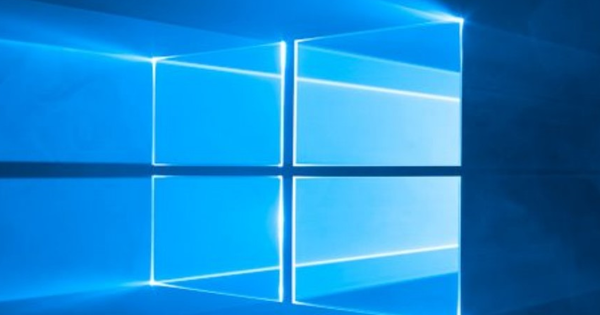The new USB 3.1 standard offers higher speeds than we were used to from USB 3.0. At the same time, the companies behind the popular standard have come up with a new plug: USB Type-C is not only convenient to use, but also offers several new possibilities.
The USB port has become indispensable on a modern PC: whether it concerns a mouse and keyboard, an external hard disk, a printer or a webcam, nowadays almost all peripherals are connected with one and the same plug. Anyone who was already working with PCs more than fifteen years ago will still remember the time of many different connections and will appreciate the ease of use of USB. Also read: In 3 steps - Turn your USB stick into an access key.
USB was introduced in 1996 and the initial versions (USB 1.0 and 1.1) had a maximum throughput of 12 megabits per second, what was then called Full Speed USB. In 2000, USB 2.0 - Hi-Speed USB in official jargon - followed, which offered 40x higher performance: 480 megabit/s. USB 3.0 or SuperSpeed USB dates from 2008 and offers transfer speeds of up to 5 gigabit/s. With all these existing variants, thanks to so-called 8b/10b coding, for every 8 bits that are sent, 10 bits actually go over the cable. As a result, the data rates of the three standards are 1.2 megabyte/s, 48 megabyte/s and 500 megabyte/s respectively. Thanks to the overhead of the protocols used, you can in practice achieve speeds of up to approximately 0.8 mbyte/s, 35 mbyte/s and 400 mbyte/s with USB 1.1, 2.0 and 3.0.
USB 3.1
The 400 mbyte/s that USB 3.0 can offer in practice is more than sufficient for many applications, but is starting to become a bottleneck for other applications. Consider external drives, for example: thanks to SSD technology, it is easy to make an external drive that offers speeds in the direction of gigabytes per second, but then there must be an interface that supports it. But USB 3.0 can also offer too little speed for cameras that transmit (almost) uncoded HD or Ultra HD video.
Hence, in 2013, the usb3.1 standard was completed. The first products are now on the market. The new version is called SuperSpeed+ and the signal speed has doubled from 5 gigabit/s to 10 gigabit/s. At the same time, the 8b/10b encoding has been changed to 128b/132b, ie for every 128 bits of data, 132 passes over the cable. This ensures less loss and means that USB 3.1 can transport up to 1241 mbyte/s. In practice, it is expected that speeds of up to approximately 1000 mbyte/s will be possible, more than doubling compared to USB 3.0!
USB 3.1 can use the same cables as USB 3.0, in fact nothing has changed in terms of hardware. It is true that at the same time a new plug has been devised, about which more below. While USB3.0 ports on most PCs and laptops can be recognized by a blue color - which has never been an obligation - the consortium behind the standard for USB 3.1 prescribes a blue-greenish color. In practice, however, it is used by few manufacturers of motherboards, PCs and laptops.
Unclear
As far as we're concerned, the consortium behind the standard made a big mistake: when USB 3.1 was introduced, the new standard with a higher speed was officially called 'USB 3.1 Gen 2' and that USB 3.0 was retroactively referred to as 'USB 3.1 Gen 1 ' titles. Fortunately, many hardware manufacturers do not participate in this unclear naming and opt for the clear and simple USB 3.0 and USB 3.1. But there are also motherboards where the manufacturer states "2x usb 3.1 Gen 2 and 6x usb 3.1 Gen 1". To make it even more annoying, there are also manufacturers and web shops that omit the generation addition. The new Apple MacBook, for example, has one USB3.1 connection. However, most shops do not clearly state in the specifications that it concerns USB 3.1 Gen 1, in fact the well-known USB 3.0.

New connector
Almost simultaneously with the new usb3.1 standard, the consortium of manufacturers that is developing the standard also delivered a new connector: usb Type-C. This new plug should above all offer better ease of use. The Type-C connector is about as small as the existing micro USB plug, but is reversible, meaning it doesn't matter how you plug it into a device. Owners of an iPhone or iPad with Lightning connector know how handy such a reversible plug is.
The Type-C plug is also available for the so-called host and client side. In other words: the same plug on both sides of the cable! This puts an end to the difference between the so-called Type-A plugs that you usually find on PC and laptop and Type-B plugs that you find on peripherals and mobile devices. This is especially good news for makers of laptops, since the normal USB connector is now becoming a limitation when making notebooks ever thinner.
As written, the new connector is separate from the usb3.1 standard. This means that USB3.0 ports with Type-C can also be used. This is the case on the new MacBook, for example. At the same time, USB 3.1 can also be performed with the existing Type-A connector. Until the entire industry has switched to Type-C connectors, which will probably happen, we will have to fiddle with all kinds of adapter cables for a while.


